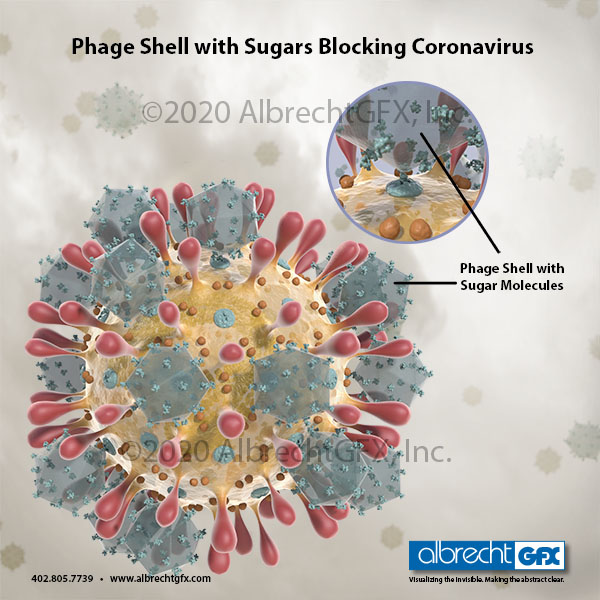
With COVID spread as daily news, we looked for hopeful news highlighting potential ways to counter flu virus. We found many novel approaches to combatting flu virus and chose to illustrate a Berlin, Germany study where researchers at FMP and Humboldt University are collaborating to research avian flu / seasonal flu treatment options.
When researchers noted that strong multiple bonds formed between flu virus and lung cell tissue, they focused on this bond as a potential way to block the virus from infecting lung cells.
The next step was to create a faux lung cell from an empty Q-beta bacteriophage and cover the phage surface with the same sugar molecules (sialic acid) found on lung cell surface to which viruses attach. The deception worked. Influenza viruses formed tight bonds to faux lung cell sugars, bonds so strong that influenza viruses could not detach to infect actual lung cells.
The study has since been broadened to include coronavirus. The study’s results were published in a recent article in Nature Nanotechnology: “Phage Capsid Nanoparticles with Defined Ligand Arrangement Block Influenza Virus Entry.”


